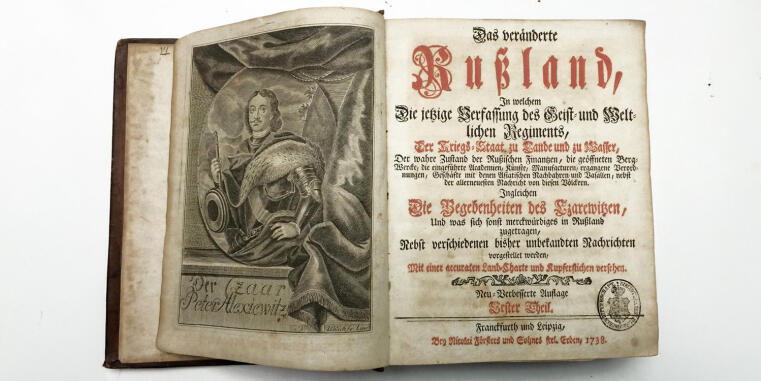

Jannik Wiethoff genannt Riemann, 6th semester Bachelor student in Latin and History at the Faculty of History & Philosophy, has received the 2025 Undergraduate Student Award from the Early Slavic Studies Association (ESSA) for his outstanding term paper on Friedrich Christian Weber's book “Das veränderte Russland”.
The following abstract explains what Mr. Wiethoff received the award for:
“Despite the fact that Friedrich Christian Weber’s “Das veränderte Rußland” published in 1721 with its various number of documents, statistics and personal reports provides the most substantial source regarding the contemporary perception of Petrine Russia in Western Europe, it has received only minimal attention from researchers until today. Moreover, the leading monographies by Eckard Matthes and Wolfgang Geier have not succeeded in consolidating their analyses on a basis convening to the source’s characteristics. Weber’s report is uniformly read as a chronological diary and is frequently used as a source of Peter the Great and his reforms like an authentic account of Weber’s experiences. The study presented by Jannik Wiethoff aims to show that those assumptions contradict the composition of “Das veränderte Rußland”. Accordingly, it starts its analysis from the hitherto unstudied correspondence of Weber, within which direct intertextualities with Weber’s books are identified for the first time. It is evident from these parallels that the work is subject to an intentional conception resulting from a systematic revision of the diary ex post. Since the study also proves the existence of fundamental genre characteristics of travel literature, it is an interdisciplinary approach that only can provide a critical interpretation of that source. The objective of the study is therefore twofold: Firstly, it aims to establish a new methodological approach that can also be utilised by other historians to systematically engage with the source. Secondly, by employing this approach, it seeks to provide a novel interpretation of Weber’s image of Russia. Topoi as well as leitmotifs are extracted from Weber’s descriptions. His characterizations of the Russians are then categorized according to the extent to which they are integrated into the narrative. Finally, the lens through which Weber viewed the Russians is reconstructed. Even though this lens clearly colors his overall image of Russians, it can nevertheless be demonstrated that this image contains considerably more shades than scholars have so far been able to draw out.”

